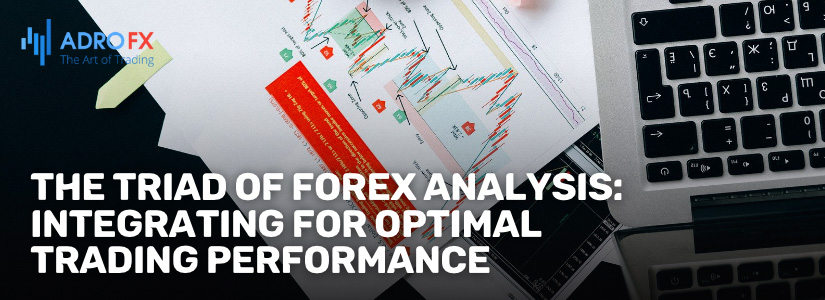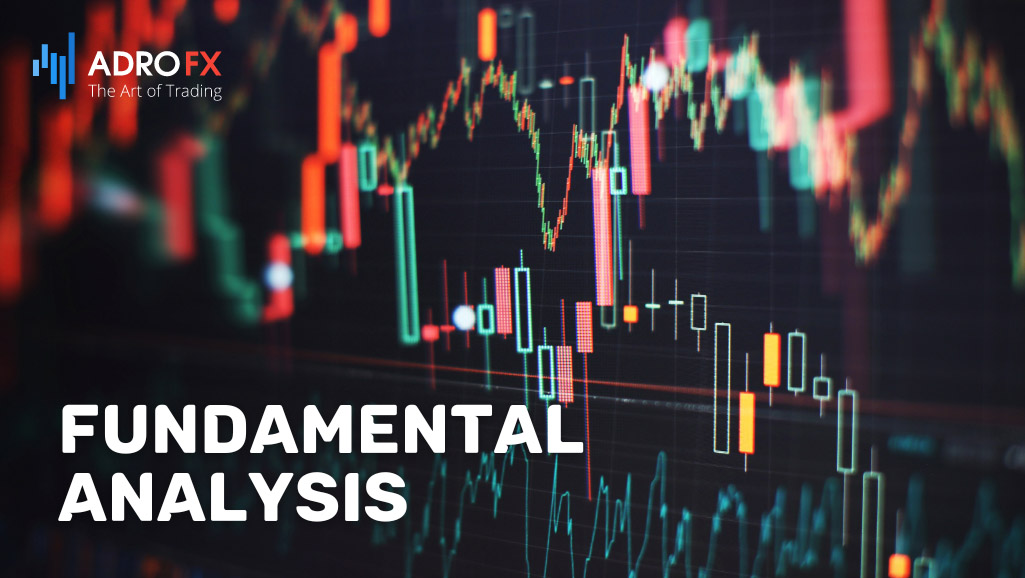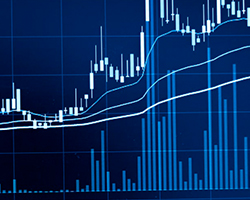The Triad of Forex Analysis: Integrating for Optimal Trading Performance

Navigating the vast and dynamic landscape of the forex market requires adept analysis and strategic decision-making. With numerous methodologies at their disposal, traders seek to uncover profitable trading opportunities amidst the ever-changing currents of global currency exchange. Among the primary types of analysis stand fundamental, technical, and sentiment analysis, each offering its unique lens through which to interpret market behavior. While some may advocate for the supremacy of one approach over the others, the wisdom lies in recognizing the synergistic potential of integrating all three. By combining various analytical frameworks, traders can harness a more comprehensive understanding of market dynamics and enhance their ability to identify lucrative trades. In this article, we explore the intricacies of fundamental, technical, and sentiment analysis, and delve into the benefits of integrating these methodologies to navigate the complexities of the forex market effectively.
Maximizing Profitability Through Integrated Analysis
Numerous methodologies exist for analyzing the forex market to pinpoint lucrative trading opportunities. However, it has been proven that combining various approaches can yield more favorable results in terms of profit generation.
The primary types of analysis in forex trading include:
- Fundamental analysis
- Technical analysis
- Sentiment analysis
While some traders opt to specialize in a single type of analysis to enhance their mastery over a particular aspect of the forex market, adopting a holistic approach mitigates many of the drawbacks associated with singular methods and increases the likelihood of identifying profitable trades.
Indeed, conducting a comprehensive market analysis necessitates leveraging all three approaches. Just as a three-legged stool requires each leg for stability, successful forex trading mandates the integration of fundamental, technical, and sentiment analyses.
Focusing solely on one method while disregarding the others can result in weak analysis and potential losses. However, any weaknesses inherent in one analytical technique can be counterbalanced by incorporating insights from the other two types of analysis.
But how exactly can you integrate these three types of forex analysis?
Let's delve into each approach individually.

Fundamental Analysis
This form of analysis centers on the examination of economic factors that influence currency valuations. Key economic fundamentals include inflation rates, interest rates, political developments, unemployment figures, and Gross Domestic Product (GDP).
Traders who employ fundamental analysis, commonly referred to as fundamentalists, believe that a country's underlying macroeconomic conditions are mirrored in the value of its currency. Consequently, a nation with a robust economy typically boasts a stronger currency compared to one with a weaker economic outlook.
Fundamentalists typically assess a country's economic prospects to determine whether its currency is poised to appreciate or depreciate. They often scrutinize major economic announcements and reports, relying on economic calendars to stay abreast of significant events. For instance, websites like AdroFX offer comprehensive economic news calendars that facilitate fundamental analysis.
Before the release of an economic report, leading economists worldwide formulate a consensus regarding the expected outcome of that report. Subsequently, the actual report is compared to this consensus to gauge its impact on the forex market.
The release of economic reports is typically categorized as follows:
- As expected: The released statement aligns with expectations.
- Better-than-expected: The released statement surpasses expectations.
- Worse-than-expected: The released statement falls short of expectations.
Traders interpret deviations between the consensus and actual report levels, with larger variances often leading to significant market volatility. A better-than-expected report indicates a positive economic outlook, potentially bolstering the associated currency's value vis-à-vis other currencies. Conversely, a worse-than-expected report suggests a negative economic outlook, potentially resulting in currency depreciation.
Most fundamental traders posit that a report meeting or closely approaching the consensus level typically yields a neutral effect on the market.
Technical Analysis
Technical Analysis involves examining historical market data to forecast future currency price movements. Traders who follow technical analysis rely on a variety of tools and methodologies to interpret past market behavior and identify potential trading opportunities.
Utilizing techniques such as analyzing candlestick chart patterns, identifying support and resistance levels, drawing trendlines, and utilizing indicators like moving averages and Fibonacci retracements, technical analysts aim to discern patterns and trends in price action.
Fundamentally, technical analysts operate on three core assumptions. Firstly, they prioritize the significance of price action, believing that all relevant fundamental factors are already reflected in market movements. Consequently, they concentrate solely on interpreting price action displayed on charts, rather than analyzing underlying causes.
Secondly, technical analysts emphasize the importance of trends in currency price movements. They identify three main types of trends: upward trends (indicating price increase), downward trends (indicating price decrease), and sideways trends (indicating price fluctuation without a clear direction). Once a trend is established, technical analysts typically expect price action to adhere to it until a new trend emerges.
Lastly, technical analysts assert that market history tends to repeat itself, manifesting in recognizable patterns that can be anticipated in the future. These patterns, being systematic and predictable, enable traders to forecast currency price directions with reasonable accuracy.
Sentiment Analysis
Sentiment Analysis, on the other hand, involves evaluating the prevailing sentiments or attitudes of market participants toward currency prices. Traders recognize that individual feelings and preferences significantly influence trading decisions, impacting market dynamics.
While retail traders may lack the influence to sway market directions, understanding market sentiment is crucial for devising effective trading strategies. By assessing whether the market sentiment is bullish (positive) or bearish (negative), traders can incorporate this insight into their decision-making processes.
A common strategy in sentiment analysis involves contrarian trading, where traders go against prevailing market sentiments. For instance, if a currency pair exhibits strong bullish sentiment, indicating it may be overbought, sentiment analysts may anticipate a price reversal and initiate sell orders.
Indicators such as the Commitment of Traders (COT) report and the Relative Strength Index (RSI) are commonly used to gauge market sentiment, providing traders with valuable insights into market dynamics and potential trading opportunities.

Combining the Three Types of Analysis
Various methodologies exist for analyzing the forex market to identify profitable trading opportunities. It has been proven that combining different approaches can lead to more favorable results in terms of profit generation. The primary types of analysis in forex trading are fundamental analysis, technical analysis, and sentiment analysis. While some traders specialize in a single type of analysis to enhance their mastery over a particular aspect of the forex market, adopting a holistic approach mitigates many drawbacks associated with singular methods and increases the likelihood of identifying profitable trades.
Conducting a comprehensive market analysis requires leveraging all three approaches. Just as a three-legged stool requires each leg for stability, successful forex trading mandates the integration of fundamental, technical, and sentiment analyses.
Focusing solely on one method while disregarding the others can result in weak analysis and potential losses. However, any weaknesses inherent in one analytical technique can be counterbalanced by incorporating insights from the other two types of analysis.
Integrating fundamental analysis involves examining economic factors that influence currency valuations, such as inflation rates, interest rates, political developments, unemployment figures, and Gross Domestic Product (GDP). Traders who employ fundamental analysis believe that a country's macroeconomic conditions are reflected in the value of its currency. They assess whether a country's economic prospects indicate currency appreciation or depreciation by analyzing major economic announcements and reports and comparing them to consensus expectations.
Technical analysis involves assessing past market behavior to project future currency price movements. Techniques and tools used include candlestick chart patterns, support and resistance levels, trendlines, and indicators such as moving averages and Fibonacci. Technical analysts rely on the assumption that price action reflects all fundamental factors and that market movements follow trends. By identifying patterns and trends, technical analysts aim to forecast the direction of currency prices with some degree of accuracy.
Sentiment analysis involves analyzing the predominant feeling or attitude of market participants toward currency prices. Traders assess whether the market sentiment is bullish or bearish and incorporate this into their trading strategy. Common indicators used for sentiment analysis include the Commitment of Traders (COT) report and the Relative Strength Index (RSI). Sentiment analysts often enter trades against the prevailing market feeling, anticipating price reversals when market sentiment reaches extremes.
By integrating fundamental, technical, and sentiment analyses, traders can gain a more comprehensive understanding of the forex market and make more informed trading decisions. This approach allows them to capitalize on a broader range of opportunities while minimizing the risks associated with relying solely on one type of analysis.
Which Type of Analysis Is Better?
In the realm of forex trading, the debate over which type of analysis reigns supreme - fundamental, technical, or sentiment - often ensues. Each method offers unique insights into market behavior, presenting traders with a range of tools and strategies to navigate the complex world of currency trading. While some may advocate for the superiority of one approach over the others, the truth lies in the synergy achieved by integrating all three types of analysis.
Fundamental analysis delves into economic factors that influence currency valuations, such as inflation rates, interest rates, political developments, and GDP. It provides a comprehensive understanding of a country's macroeconomic conditions, enabling traders to anticipate currency movements based on economic trends and events.
Technical analysis, on the other hand, focuses on historical market data to predict future price movements. By identifying patterns, trends, and support/resistance levels, technical analysts aim to forecast the market direction and identify entry and exit points for trades.
Sentiment analysis adds another layer to the analysis by gauging the prevailing feeling or attitude of market participants toward currency prices. It provides insight into the collective psychology of traders, helping to identify market sentiment trends and potential shifts in direction.
While each type of analysis offers valuable insights on its own, the true power lies in combining all three approaches. By integrating fundamental, technical, and sentiment analyses, traders can gain a more comprehensive understanding of the forex market and make more informed trading decisions.
Fundamental analysis provides the macroeconomic context, technical analysis offers insights into price action and market trends, and sentiment analysis reveals the underlying psychology driving market behavior. Together, these three types of analysis form a robust framework for navigating the complexities of the forex market and identifying profitable trading opportunities.
Ultimately, there is no one-size-fits-all answer to the question of which type of analysis is better. Instead, successful traders recognize the value of integrating multiple approaches to gain a holistic understanding of market dynamics and maximize their chances of success in the competitive world of forex trading.
Conclusion
In the fast-paced realm of forex trading, the pursuit of profitability necessitates a nuanced and multifaceted approach to market analysis. As we've explored in this article, fundamental, technical, and sentiment analysis each offer valuable insights into market behavior, providing traders with a diverse toolkit for decision-making. While individual methodologies may offer strengths in certain areas, the true power lies in integrating these approaches to gain a holistic understanding of the forex market. By leveraging the macroeconomic context provided by fundamental analysis, the price action insights of technical analysis, and the sentiment trends revealed by sentiment analysis, traders can navigate the complexities of currency exchange with greater precision and confidence. In the pursuit of trading success, it is not a question of which type of analysis is better, but rather, how effectively one can integrate and leverage the insights offered by each analytical framework to maximize profitability and minimize risk in the dynamic world of forex trading.
About AdroFx
Established in 2018, AdroFx is known for its high technology and its ability to deliver high-quality brokerage services in more than 200 countries around the world. AdroFx makes every effort to keep its customers satisfied and to meet all the trading needs of any trader. With the five types of trading accounts, we have all it takes to fit any traders` needs and styles. The company provides access to 115+ trading instruments, including currencies, metals, stocks, and cryptocurrencies, which make it possible to make the most out of trading on the financial markets. Considering all the above, AdroFx is the perfect variant for anyone who doesn't settle for less than the best.


![What is the best method of analysis for forex trading? [2022 Guide]](/sites/default/files/2022-08/what-is-the-best-method-of-analysis-for-forex-trading-2022-guide-1.png)






